GEM for Thermal Neutron
- Details
- Last Updated: Tuesday, 18 February 2014 14:27
A thermal neutron detector based on Triple GEM technology equipped with a borated cathode (1µm thick B4C) was realized and tested at the VESUVIO (ISIS-RAL) and N-TOF neutron spallation source beam lines.
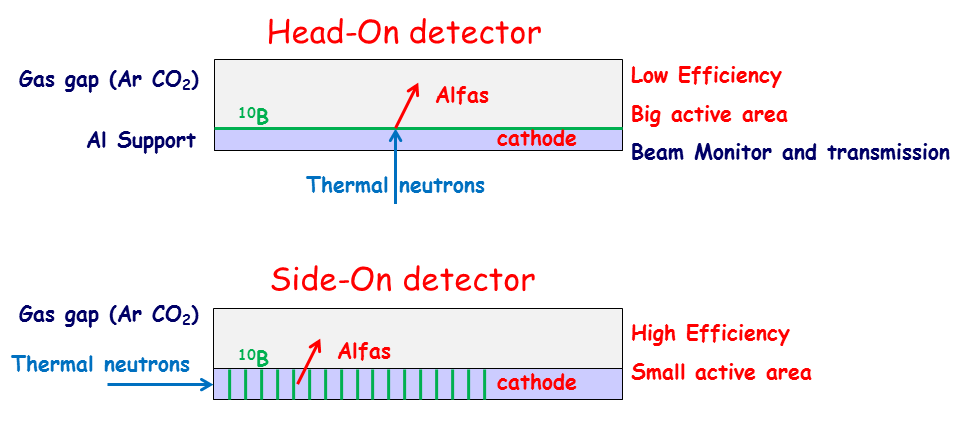 |
The alfa particle produced in a nuclear reaction between a thermal neutron and a Boron layer, could be escape from the material only if the tikness is smaller than 1 micron, So tipically two main detector structures can be used for thermal neutron detection Head-on structure for low efficiency and large active area Side-on structure for high efficiency and small active area
|
|
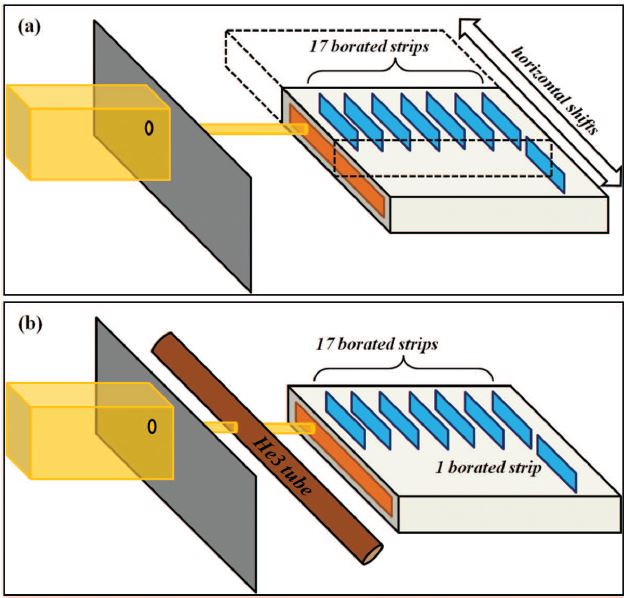 |
The thermal neutron detector made with several slice of borated supports was caracterized with a narrow beam. The detector was moved horizzontally respect to the beam for position resolution measurements. Subsequently the detector was compared with an 3He detector.
|
|
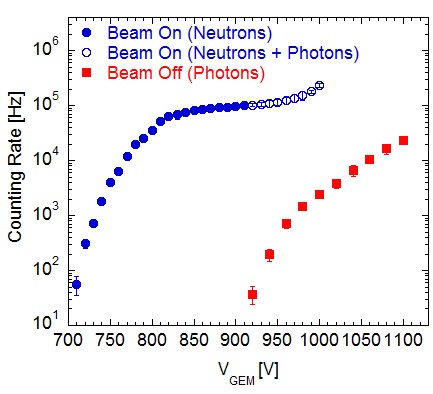 |
The working point was determined by performing a VGEM scan when the beam was on and off. The counting rate is an increasing function of VGEM and, as expected, the detector starts to detect thermal neutrons at a voltage as low as VGEM = 710 V that corresponds to an effective gas gain of about 10. A wide counting rate plateau is present between 825 V and 925 V while for VGEM > 925 V the detector becomes sensitive to the gamma-ray background. The working point at 870 V allows a rejection of the gamma-ray background that is always present during neutron measurements. The presence of a such a wide plateau (even wider than the one found for fast neutrons) confirms that GEM technology is very well suited to be used for thermal neutron detectors. | |
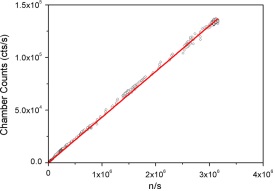 |
A first measurement was made at TRIGA reactor at the ENEA-Casaccia.The reactor can be operated at different powers from a few Watt to 1 MW with a neutron flux of about 2x106 n/cm2/s at the maximum power featuring a Maxwellian spectrum with about 70 meV full width half maximum. Good linearity between the detector counts and the expected neutron flux from the reactor power measured over 6 order of magnitudes | |
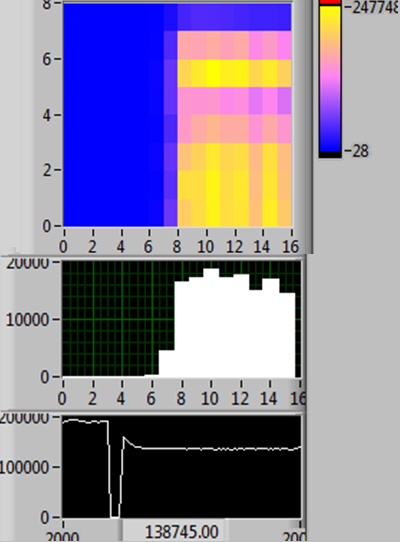 |
In this picture is visible the respons of a side-on detector when a wide neutron beam is impinging on the active area.
It's clearly visible the gamma rejection obtained obtained by this detector. Neutron to gamma ratio is of the order of 104 In the last plot it's visible also the flux of neutron as a function of time measured in real time |
|
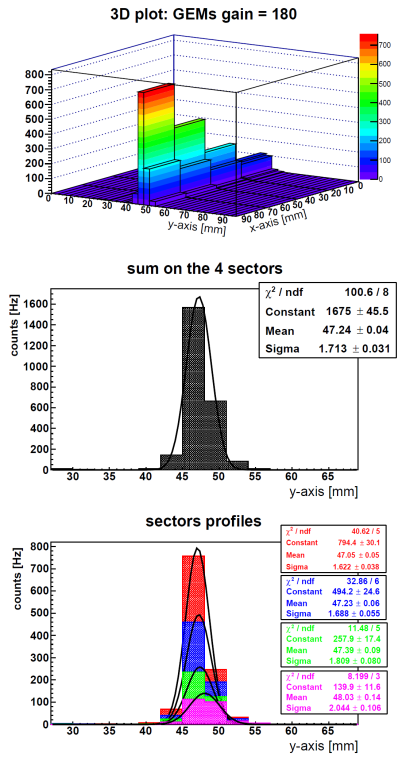 |
During the detector position scan, a sequence of 3D beam profiles like those shown in this figure was measured.
|
|
|
The 2D beam profile shown in this figure was obtained by summing all the counts on the four pads along the X axis. A Gaussian function was used to fit these profiles, obtaining and their central value provides a measure of the beam positions. |
||
| This figure shows the intensity profiles along the x direction (neutron beam axis) for the four pads rows, A gaussian fit shows an increase in the Full Width at Half Maximum (FWHM) of the beam profile along the neutron flight path inside the detector of about 25% between the first and the last pads sector. This is most likely due to a small divergence of the beam. The effect of the scattering of the borated sheets is very small: a theoretical calculation of the scattering power of a borated sheet (the overwhelming contribution is from Al), provides a value of 4‰ circa. Neutron scattering off Al seems to be not significant in such a way to affect the FWHM of the measured intensity profiles. |
| In this movie the beam profile measured by the detector during a trasversal scan |

